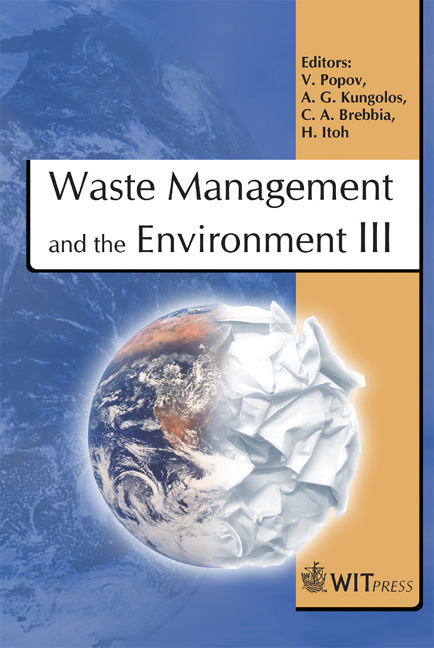Improved DRASTIC Method For Assessment Of Groundwater Vulnerability To Generic Aqueousphase Contaminants
Price
Free (open access)
Transaction
Volume
92
Pages
10
Published
2006
Size
381 kb
Paper DOI
10.2495/WM060421
Copyright
WIT Press
Author(s)
N. Z. Jovanovic, S. Adams, A. Thomas, M. Fey, H. E. Beekman, R. Campbell, I. Saayman & J. Conrad
Abstract
Increased use and protection of groundwater resources are seen as possible solutions to mitigating water scarcity in arid and semi-arid regions. The DRASTIC index method is one of the most commonly used approaches to assess groundwater vulnerability to pollution. However, this method has been criticized in the past due to its subjectivity as well as the failure to account for some important hydrogeological characteristics (e.g. multi-layer vadose zone and preferential flow) and specific properties of contaminants (e.g. sorption and decay). These problems were addressed in this study with the objective of improving the DRASTIC method for assessment of groundwater vulnerability to generic aqueous-phase contaminants. Literature data and laboratory measurements were used in order to define categories and weighing factors for hydrogeological characteristics and specific contaminant properties. The new DRASTIC method developed in this study provides an improved categorization of the impact of the vadose zone, which accounts for the following factors: multi-layer vadose zone, based on site-specific conceptual models; hydraulic properties of the unsaturated zone (flow mechanism, drainage and travel time); and specific chemical properties (sorption and decay). The information was packaged in a user-friendly format for rating groundwater vulnerability. The method can be used for applications in site-specific environmental impact assessments for new developments, for regional groundwater vulnerability assessment as well as in integrated water resources management. Keywords: decay, DRASTIC, groundwater vulnerability, hydraulic conductivity, preferential flow, recharge, sorption, travel time, vadose zone.
Keywords
decay, DRASTIC, groundwater vulnerability, hydraulic conductivity,preferential flow, recharge, sorption, travel time, vadose zone.





